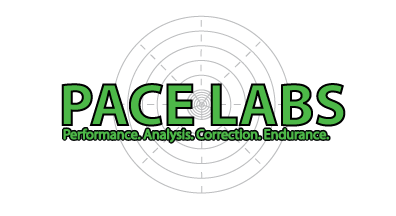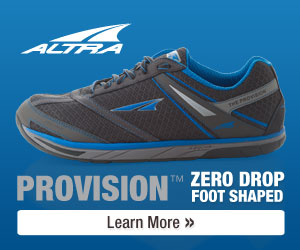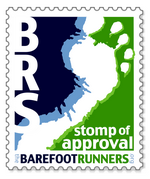 The Achilles tendon is a fibrous tissue that connects the heel to the calf muscles. The muscles in your legs compose the most powerful muscle group in the body, and the Achilles tendon is the thickest and strongest tendon in the body. Contracting the calf muscles pulls the Achilles tendon, which pushes the foot downward. This contraction enables standing on the toes, walking, running, and jumping. Conversely, when the Tibialis Anterior muscles are contracted, the Achilles is stretched or lengthened, allowing the foot to rise up. Each Achilles tendon is subjected to
The Achilles tendon is a fibrous tissue that connects the heel to the calf muscles. The muscles in your legs compose the most powerful muscle group in the body, and the Achilles tendon is the thickest and strongest tendon in the body. Contracting the calf muscles pulls the Achilles tendon, which pushes the foot downward. This contraction enables standing on the toes, walking, running, and jumping. Conversely, when the Tibialis Anterior muscles are contracted, the Achilles is stretched or lengthened, allowing the foot to rise up. Each Achilles tendon is subjected to  a person’s entire body weight with each step. Depending upon speed, stride, terrain and additional weight being carried or pushed, each Achilles tendon may be subjected to up to 3-12 times a person’s body weight.
a person’s entire body weight with each step. Depending upon speed, stride, terrain and additional weight being carried or pushed, each Achilles tendon may be subjected to up to 3-12 times a person’s body weight.
Diagnosis
There are three common injuries to the Achilles tendon.
 Achilles Tendonosis: This was formerly called Achilles Tendinitis, but in recent years multiple studies have created a separation of tendonitis and tendonosis. Tendinitis is defined as an issue where inflammation is present in the tendon and is typically reserved for larger scale injuries. Tendonosis is considered to be a chronic degeneration without inflammation. Essentially this just means that the tendon has not healed properly over time from one or more small injuries. Inflammation may have been present in the early stages of the injury, but there is no longer inflammation present, and pain is caused by the lack of healing. The average person will fall into this category with Achilles issues. This issue is most common among middle to long distance runners. Tendonosis injuries are commonly placed on a grading scale to determine their severity and recovery time. The levels are one through four as follows:
Achilles Tendonosis: This was formerly called Achilles Tendinitis, but in recent years multiple studies have created a separation of tendonitis and tendonosis. Tendinitis is defined as an issue where inflammation is present in the tendon and is typically reserved for larger scale injuries. Tendonosis is considered to be a chronic degeneration without inflammation. Essentially this just means that the tendon has not healed properly over time from one or more small injuries. Inflammation may have been present in the early stages of the injury, but there is no longer inflammation present, and pain is caused by the lack of healing. The average person will fall into this category with Achilles issues. This issue is most common among middle to long distance runners. Tendonosis injuries are commonly placed on a grading scale to determine their severity and recovery time. The levels are one through four as follows:
Stage 1. No pain during exercise, but there is some discomfort in the morning when first getting out of bed. The stiffness and creaking go away after a few minutes and are fine the rest of the day. Lightly pinching the Achilles tendon with the forefinger and thumb in the morning or after exercise will probably indicate soreness.
Stage 2. Pain during exercise or running, but performance is not affected. The stiffness and creaking continue to appear when first getting out of bed and continue to disappear shortly afterward. Lightly pinching the Achilles tendon with the forefinger and thumb in the morning or after exercise will indicate soreness.
Stage 3. Pain during exercise or running is detrimental to performance. The stiffness and creaking continue to appear when first getting out of bed, but may continue for some time and reappear at other points during the day. Lightly pinching the Achilles tendon with the forefinger and thumb in the morning or after exercise will indicate soreness.
Stage 4. Hurts too much to exercise or run. The stiffness and creaking continue to appear when first getting out of bed, but may continue for most of the day. Lightly pinching the Achilles tendon with the forefinger and thumb at almost any time of day will indicate soreness.
These stages are basic guidelines for personal assessment but should be diagnosed by a doctor.
 Achilles Rupture: This is a partial or complete tear of the Achilles tendon. It is a quick injury that comes on suddenly and is debilitating. Achilles rupture will most commonly happen during an activity requiring sudden eccentric stretching such as sprinting. This is when you are pushing off and the calf muscles are lengthened, causing great amounts of stress on the Achilles tendon. Partial tears of the Achilles are also common among middle to long distance runners. These are also very common among middle age athletes who have been training or are under-prepared to do the training they are attempting. It can be difficult to determine the difference between a partial tear and tendonosis, so consulting a doctor is important.
Achilles Rupture: This is a partial or complete tear of the Achilles tendon. It is a quick injury that comes on suddenly and is debilitating. Achilles rupture will most commonly happen during an activity requiring sudden eccentric stretching such as sprinting. This is when you are pushing off and the calf muscles are lengthened, causing great amounts of stress on the Achilles tendon. Partial tears of the Achilles are also common among middle to long distance runners. These are also very common among middle age athletes who have been training or are under-prepared to do the training they are attempting. It can be difficult to determine the difference between a partial tear and tendonosis, so consulting a doctor is important.
A complete Achilles rupture is easy to identify, as the injured party will be debilitated and suffer from extreme and intense pain. The calf muscle will shorten, and often times there will be large amounts of bruising through the lower leg. Determining the difference between tendonosis and a partial tear of the Achilles is much more difficult. The two injuries feel very similar, and both can show no real signs of injury other than acute pain and pressure sensitivity.
 Tendocalcaneal Bursitis: A bursa is a fluid-filled sac designed to limit friction between rubbing parts. These sacs, or bursae, are found in many places in the body. When a bursa becomes inflamed, the condition is called bursitis. Tendocalcaneal bursitis is an inflammation in the bursa behind the heel bone. This bursa normally limits friction where the thick fibrous Achilles tendon that runs down the back of the calf glides up and down behind the heel. This will typically be very painful right at the bottom of the calcaneous or heel bone where the Achilles tendon connects to the bone.
Tendocalcaneal Bursitis: A bursa is a fluid-filled sac designed to limit friction between rubbing parts. These sacs, or bursae, are found in many places in the body. When a bursa becomes inflamed, the condition is called bursitis. Tendocalcaneal bursitis is an inflammation in the bursa behind the heel bone. This bursa normally limits friction where the thick fibrous Achilles tendon that runs down the back of the calf glides up and down behind the heel. This will typically be very painful right at the bottom of the calcaneous or heel bone where the Achilles tendon connects to the bone.
Excess strain and under-training are responsible for over 230,000 Achilles injuries each year in the U.S. alone. This undue strain can be caused by numerous factors, including tightness or weakness in the leg, knee, hip, or back. Uneven leg lengths, switching from high heels to flatter shoes, sudden increases in training, and high or low arches in improper footwear are also known culprits.
Prevention of Achilles injuries is quite easy in most cases. Regular exercise with gradual increases in intensity will keep the Achilles and lower leg muscles properly trained. Staying properly hydrated can have great effects on tendon health as well as keeping the muscles from getting tight. Warming up and stretching before exercise will help loosen the lower leg tissues, allowing them to better accept the stress and strain from exercise and training. Stretching after putting the lower legs under stress will also help in keeping them from over-tightening.
Treatment
Treating Achilles injuries occurs on multiple levels. If the injury is a full rupture, then often times the only answer is surgical repair and complete stabilization of the heel area. After that the injured person must undergo proper rehabilitation to regain normal use and ability of the Achilles tendon.
For tendonosis, relative rest is required. This does not mean sitting around and getting out of shape, as that will only increase the risk of future injuries. Switching to forms of exercise that utilizes the lower leg less is a good idea. Swimming, upper body lifting, and moderate cycling can be great options. Using the Achilles pain grading system will help determine the length of the rest period. Relative rest should last at least a week for a grade 1 or 2 injury, at least three weeks for a grade 3 injury, and at least a month for a grade 4 injury.
Stretch the calf muscles for twenty minutes a day. If the other leg muscles, the hip muscles, and the back muscles are tight, they may be causing tightness of the calf muscles, so stretch these other muscles as well. In addition to standard stretching, muscles can also be stretched by strengthening their opposing muscle group. For example, strengthening the anterior tibialis, the small muscle group on the front of the lower leg, stretches the calf muscles. As part of stretching, consider massage, and always remember to warm up the muscle before trying to stretch it. Stretching works best when the muscle has been flushed with blood so doing some light toe raises with your body weight a few minutes before stretching can increase effectiveness.
Strengthen the calf muscles by doing eccentric exercises daily or every other day based on soreness. Using only your body weight at first, you want to perform calf raises at a very slow and controlled pace. This is not a power movement but a rehabilitative one. The motion needs to be controlled to allow the calf muscles to get a full contraction and build necessary strength. Perform these calf raises first in any workout routine, as you want them fresh to get the best response to the movement. Three sets of 10-15 repetitions should be sufficient. Once these sets can be performed with no pain you can gradually increase the weight and speed of the exercise.
Icing the area is a must. The ice will reduce the degeneration of the area. Do not apply the ice directly to the skin, and use the ice after exercise or therapy sessions.
Avoid anti-inflammatory and pain killing drugs. The anti-inflammatory drugs will not help because Achilles tendonosis is a degenerative injury rather than an inflammation (see injuries). The pain killing drugs will mask the problem, which is likely to cause the degeneration to get worse. In addition to being ineffective, anti-inflammatory and pain killing drugs are also expensive.
 In extreme cases Achilles tendonosis will require surgery, but this is only considered after all other treatment methods have been exhausted. On that note, an Achilles rupture cannot be treated with anything other than surgery, and partial tears can also need surgery, and trying to strengthen or heal them through therapy can make them worse instead of better. Activity will cause ruptures and tears to get worse and may lead to surgery.
In extreme cases Achilles tendonosis will require surgery, but this is only considered after all other treatment methods have been exhausted. On that note, an Achilles rupture cannot be treated with anything other than surgery, and partial tears can also need surgery, and trying to strengthen or heal them through therapy can make them worse instead of better. Activity will cause ruptures and tears to get worse and may lead to surgery.
If faced with acute pain in the Achilles, it is always best to give it some rest and see how it responds. If the pain subsides, then a program of relative rest and recovery exercises will help in the healing and recovery process. If the rest period yields little to no improvement then a consultation with a doctor for further assessment is necessary.





[…] Injury: Achilles Tendon « gο barefooting […]
Definitely found some useful info here. I hurt my achilles a few weeks ago and have been working on slowly stretching and strengthening it back up. Feeling much better now, but can still feel it is not 100% yet.
Minor soreness, stiffness for two months (level 1,2). I thought I was recovered, but a day after short run had a major pain. Doctor advised 800 mgs ibuprofen 3 times a day. Concerned about conflicting advice on taking ibuprofen. Your info on everything else seems very accurate.
Please advise.
My guess is your doctor determined your problem to be related to inflammation which would make ibuprofen useful.